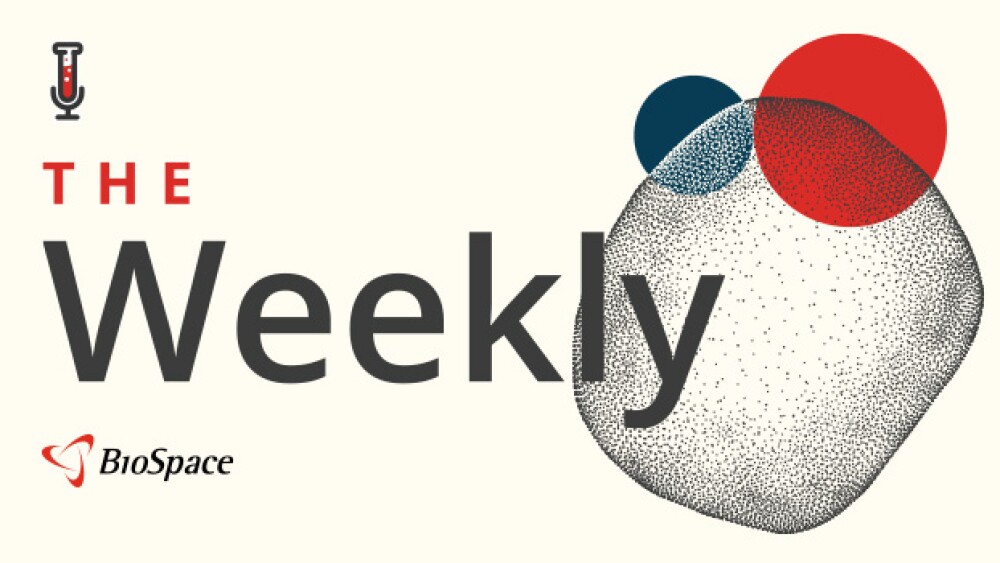| | - Company Today Also Provided Updates on R&D Portfolio and Strategy at Investor Event
- Crinecerfont New Drug Application Submission Planned in 2024
- NBI-'770, an Oral NMDA NR2B Negative Allosteric Modulator, Entering Phase 2 for the Treatment of Major Depressive Disorder
- Advancing Largest Portfolio of Muscarinic Compounds in Clinical Development
- Top-Line Phase 2 Data Readouts for Five Programs Anticipated in 2024 Including NBI-'568, an M4 Agonist, for the Treatment of Schizophrenia
SAN DIEGO, Dec. 5, 2023 /PRNewswire/ -- Neurocrine Biosciences, Inc. (Nasdaq: NBIX) today announced it received Breakthrough Therapy designation from the U.S. Food and Drug Administration (FDA) for crinecerfont in congenital adrenal hyperplasia. The Company also provided updates on its R&D portfolio and strategy at its Analyst Day, held in New York. 
“We are very pleased that the FDA granted Breakthrough Therapy designation for crinecerfont, thus recognizing both the seriousness of congenital adrenal hyperplasia and the significant unmet need currently faced by patients and families living with this condition,” said Eiry W. Roberts, Chief Medical Officer, Neurocrine Biosciences. “The outstanding safety and efficacy results from the Phase 3 CAHtalyst™ studies in pediatric and adult patients suggest that crinecerfont has the potential to represent a substantial improvement over current standard of care in CAH by controlling androgen levels and allowing for reduced steroid doses. We remain on track to submit the new drug application in 2024.” 2023 Analyst Day R&D Portfolio and Strategy Updates At today’s Analyst Day, Neurocrine Biosciences provided an update on its R&D portfolio and strategy, including the Company’s focus on building breadth and depth across therapeutic areas and modalities with key focus areas in VMAT2 inhibition, CRF antagonism, muscarinic agonism to antagonism, and gene therapy. With a diversified early-stage portfolio spanning a range of modalities including small molecules and biologics, and a growing pre-clinical and development candidate portfolio, Neurocrine is uniquely positioned to advance a steady flow of innovative clinical candidates to patients across its neuroscience-focused therapeutic areas of interest. The Company remains on-track to advance two gene therapies into the clinic in 2025, and anticipates at least 20 development candidates by 2027. Other key portfolio and pipeline updates include: Valbenazine - Ongoing Phase 3 study of valbenazine in adjunctive treatment of schizophrenia (ATS) will inform potential advancement of NBI-'890, a next-generation, long-acting VMAT2 inhibitor, which we anticipate will enter the clinic in 2024
- No additional Phase 3 studies of valbenazine in ATS planned
NBI-'770 (Oral, NMDA NR2B Negative Allosteric Modulator) - Represents a potential first-in-class opportunity on a clinically validated target
- Program entering Phase 2 for treatment of major depressive disorder
Muscarinic Compounds - Validated and differentiated mechanisms of action
- Five programs represent largest number of muscarinic assets in human studies, including lead molecule, NBI-'568, in Phase 2 study for the treatment of schizophrenia
- 2024 portfolio will include four Phase 1 programs:
- NBI-'570 (dual M1/M4 agonist)
- NBI-'567 (M1-preferring agonist)
- NBI-'569 (M4-preferring agonist)
- NBI-'986 (M4 antagonist, internally discovered at Neurocrine Biosciences)
Phase 2 Top-Line Clinical Data Expected in 2024 - NBI-'568 (M4 agonist) for the treatment of schizophrenia
- Luvadaxistat (DAAO inhibitor) for cognitive impairment associated with schizophrenia
- NBI-'845 (AMPA potentiator) for inadequate response to treatment in major depressive disorder
- Efmody (long-acting glucocorticoid) for adrenal insufficiency
- Efmody for congenital adrenal hyperplasia
About Breakthrough Therapy Designation
Breakthrough Therapy designation is a process developed by the FDA to expedite development and review of drugs that are intended to treat a serious condition and where clinical evidence indicates that the potential drug may demonstrate substantial improvement over available therapy on a clinically significant endpoint(s). To learn more about Breakthrough Therapy designation, click here. About Classic Congenital Adrenal Hyperplasia
Congenital adrenal hyperplasia (CAH) refers to a group of genetic conditions that result in an enzyme deficiency that alters the production of adrenal hormones which are essential for life. Approximately 95% of CAH cases are caused by a mutation that leads to deficiency of the enzyme 21-hydroxylase (21-OHD). In classic CAH, severe deficiency of this enzyme leads to an inability of the adrenal glands to produce cortisol and, in approximately 75% of cases, aldosterone. If left untreated, classic CAH can result in salt wasting, dehydration, and even death. There are currently no non-glucocorticoid treatments approved by the U.S. Food and Drug Administration (FDA) for classic CAH. Glucocorticoids (GCs), the current standard of care, are used not only to correct the endogenous cortisol deficiency but typically used at greater than physiologic (supraphysiologic) doses to try to suppress the high levels of corticotropin-releasing factor (CRF) and adrenocorticotropic hormone (ACTH) that result in androgen excess. However, glucocorticoid treatment at supraphysiologic doses has been associated with serious and significant complications of steroid excess, including metabolic issues such as weight gain and diabetes, cardiovascular disease, and osteoporosis. Additionally, long-term treatment with supraphysiologic GC doses may have psychological and cognitive impact such as changes in mood and memory. Androgen excess has been associated with abnormal bone growth and development in pediatric patients, female health problems such as acne, excess hair growth and menstrual irregularities, testicular rest tumors in males, and fertility issues in both sexes. To learn more about CAH, click here. About Corticotropin Releasing Factor (CRF)
Corticotropin releasing factor (CRF) regulates the secretion of adrenocorticotropic hormone (ACTH) by the pituitary gland. The neuropeptide was discovered, isolated and identified by the late Wylie W. Vale, PhD., a founder of Neurocrine Biosciences who led the Clayton Foundation Laboratories for Peptide Biology and was the Helen McLoraine Chair in Molecular Neurobiology at the Salk Institute. Dr. Vale mapped the key role CRF played in the regulation of the stress response. In the 95% of classic CAH cases caused by a mutation in the 21-hydroxylase enzyme, the severe enzyme deficiency results in little or no production of the stress hormone cortisol, which can lead to adrenal crisis. The lack of cortisol production also causes a break in the feedback loop that would normally regulate the body’s secretion of CRF, and as a result ACTH, which maintains adrenal androgen production within normal ranges. About Crinecerfont
Crinecerfont is an investigational, oral, selective corticotropin-releasing factor type 1 receptor (CRF1) antagonist being developed to reduce and control excess adrenal androgens through a steroid-independent mechanism for the treatment of congenital adrenal hyperplasia (CAH) due to 21-hydroxylase deficiency (21-OHD). The compound was identified by Dimitri Grigoriadis, Ph.D., Chief Research Officer at Neurocrine Biosciences who conducted post-graduate research with Dr. Wylie Vale at the Salk Institute. Antagonism of CRF1 receptors in the pituitary has been shown to decrease adrenocorticotropic hormone (ACTH) levels, which in turn decreases the production of adrenal androgens and potentially the symptoms associated with classic CAH. Our data demonstrates that lowering androgen levels enables lower, more physiologic dosing of glucocorticoids and thus could potentially reduce the complications associated with exposure to greater than normal glucocorticoid doses in patients with classic CAH. Prior to receiving Breakthrough Therapy designation from the FDA, crinecerfont also received Fast Track and Rare Pediatric Disease designations in congenital adrenal hyperplasia. To learn more about crinecerfont, click here. About the CAHtalyst Phase 3 Studies
The CAHtalyst Phase 3 Pediatric and Adult global registrational studies were designed to evaluate the safety, efficacy, and tolerability of crinecerfont in children and adolescents (2–17 years of age) and adults (18 years of age and older) with classic congenital adrenal hyperplasia (CAH) due to 21-OHD, respectively. The CAHtalyst Phase 3 Pediatric and Adult clinical studies met their primary and secondary endpoints. The CAHtalyst Pediatric study demonstrated a statistically significant decrease in serum androstenedione from baseline with crinecerfont at Week 4 over baseline, while both studies showed crinecerfont treatment led to statistically significant reductions in daily glucocorticoid from baseline while maintaining androgen control at Week 28 and Week 24, respectively. Crinecerfont was generally well tolerated in the CAHtalyst Phase 3 studies. The most common adverse events in the CAHtalyst Pediatric study were headache, fever, vomiting, upper respiratory tract infection, and nasopharyngitis, while the most common adverse events in the CAHtalyst Adult study were fatigue, headache, and coronavirus infection. Few serious adverse events were seen in either study, with none assessed as related to crinecerfont. Both studies achieved a >95% completion rate. Details about the Phase 3 data from the CAHtalyst Pediatric Study were reported in October 2023 and can be found here. For more information about the CAHtalyst Pediatric Phase 3 study, please visit ClinicalTrialsPediatric.gov. Details about the Phase 3 data from the CAHtalyst Adult Study were reported in September 2023 and can be found here. For more information about the CAHtalyst Phase 3 study in adults, please visit ClinicalTrialsAdult.gov. About Neurocrine Biosciences, Inc.
Neurocrine Biosciences is a leading neuroscience-focused, biopharmaceutical company with a simple purpose: to relieve suffering for people with great needs, but few options. We are dedicated to discovering and developing life-changing treatments for patients with under-addressed neurological, neuroendocrine and neuropsychiatric disorders. The company’s diverse portfolio includes FDA-approved treatments for tardive dyskinesia, chorea associated with Huntington’s disease, Parkinson’s disease, endometriosis* and uterine fibroids*, as well as a robust pipeline including multiple compounds in mid- to late-phase clinical development across our core therapeutic areas. For three decades, we have applied our unique insight into neuroscience and the interconnections between brain and body systems to treat complex conditions. We relentlessly pursue medicines to ease the burden of debilitating diseases and disorders, because you deserve brave science. For more information, visit neurocrine.com, and follow the company on LinkedIn, Twitter, and Facebook. (*in collaboration with AbbVie) NEUROCRINE BIOSCIENCES and NEUROCRINE are registered trademark of Neurocrine Biosciences, Inc. CAHtalyst and the Neurocrine logo are trademarks of Neurocrine Biosciences, Inc. Forward-Looking Statement
In addition to historical facts, this press release contains forward-looking statements that involve a number of risks and uncertainties. These statements include, but are not limited to, statements regarding the potential benefits to be derived from certain of our product candidates and our future development plans. Among the factors that could cause actual results to differ materially from those indicated in the forward-looking statements include: our future financial and operating performance; the risk that our products and/or product candidates will not be found to be safe and/or effective or may not prove to be beneficial to patients; that development activities for our products and/or product candidates may not be completed on time or at all; risks that clinical development activities may be delayed for regulatory or other reasons, may not be successful or replicate previous and/or interim clinical trial results, or may not be predictive of real-world results or of results in subsequent clinical trials; risks that regulatory submissions for our products and/or product candidates may not occur or be submitted in a timely manner; risks that our products and/or product candidates may not obtain regulatory approvals; or that the U.S. Food and Drug Administration or regulatory authorities outside the U.S. may make adverse decisions regarding our products and/or product candidates; risks and uncertainties relating to competitive products and technological changes that may limit demand for our products; risks associated with our dependence on third parties for development and manufacturing activities related to our products and our product candidates, and our ability to manage these third parties; and other risks described in the Company’s periodic reports filed with the Securities and Exchange Commission, including without limitation the Company’s quarterly report on Form 10-Q for the quarter ended September 30, 2023. Neurocrine Biosciences disclaims any obligation to update the statements contained in this press release after the date hereof.  View original content to download multimedia:https://www.prnewswire.com/news-releases/neurocrine-biosciences-receives-breakthrough-therapy-designation-from-us-food-and-drug-administration-for-crinecerfont-in-congenital-adrenal-hyperplasia-302006430.html View original content to download multimedia:https://www.prnewswire.com/news-releases/neurocrine-biosciences-receives-breakthrough-therapy-designation-from-us-food-and-drug-administration-for-crinecerfont-in-congenital-adrenal-hyperplasia-302006430.html
SOURCE Neurocrine Biosciences, Inc. | |





